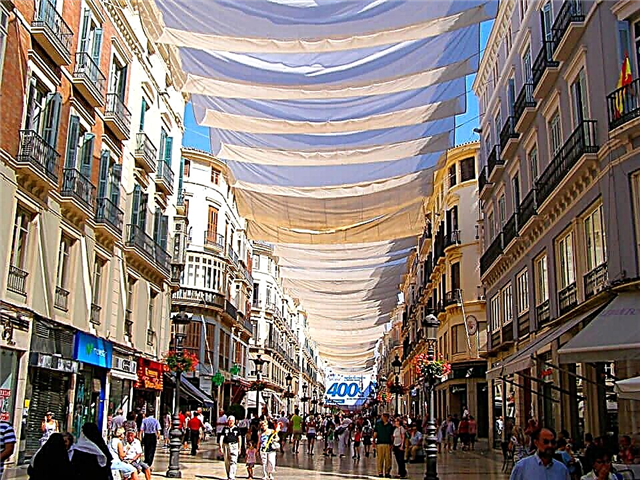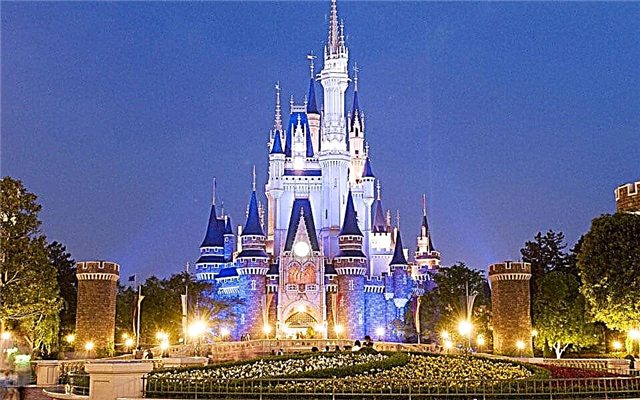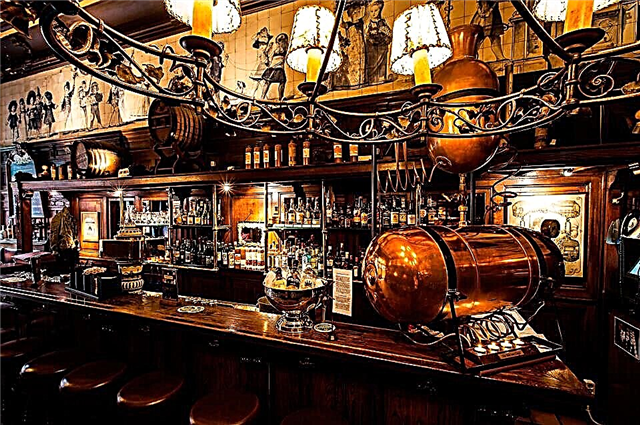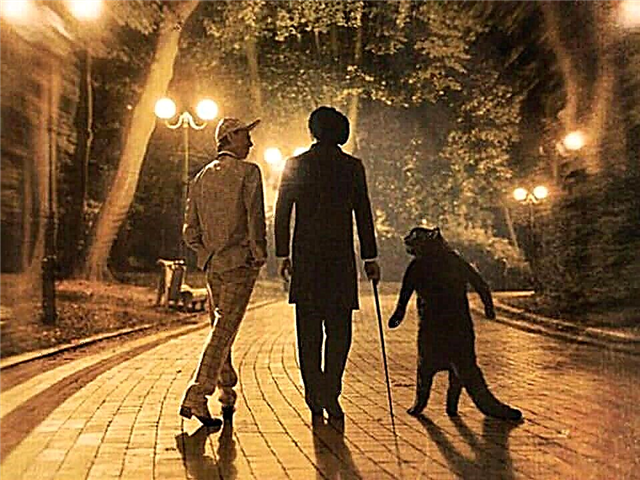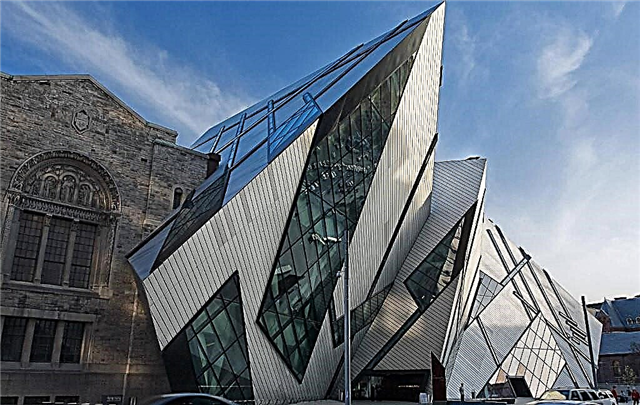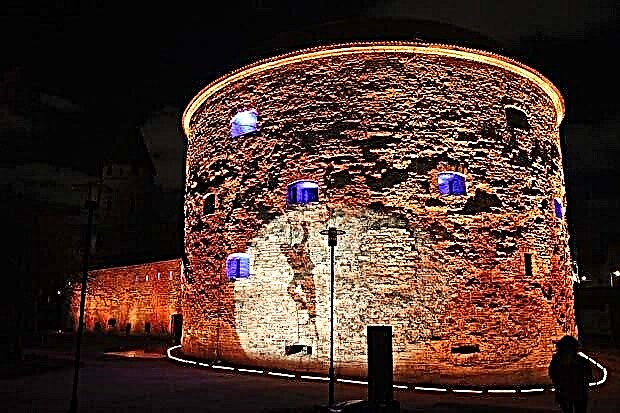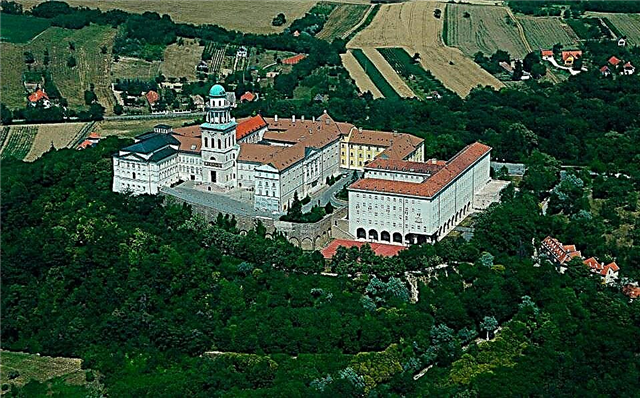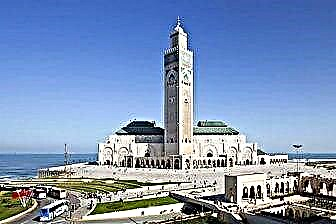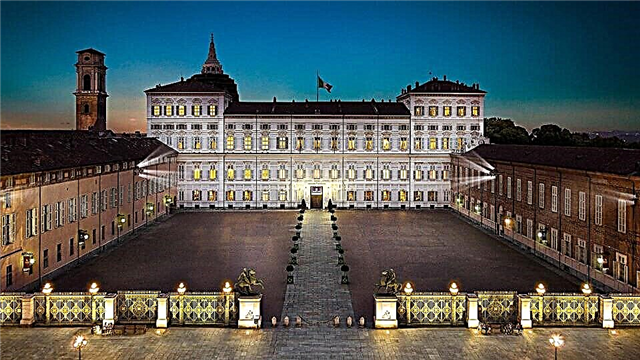The first capital of the united Italy was spread at the foot of the Alps. Immersed in the greenery of parks, it is considered the Italian Paris and a favorite of tourists, as many of Turin's attractions are impressive. A huge number of palaces, erected in the XVI-XVIII centuries, are replete with a variety of styles from Baroque to Art Nouveau. In Turin and its outskirts, there are 15 royal residences, included in the UNESCO World Heritage List. It is also called the city of education: there are a large number of lyceums, universities, academies and other educational institutions. The oldest of them is the University of Turin, founded at the beginning of the 15th century. Let's get acquainted in more detail with the most significant places of the city, recommended for visiting.
Castello Square
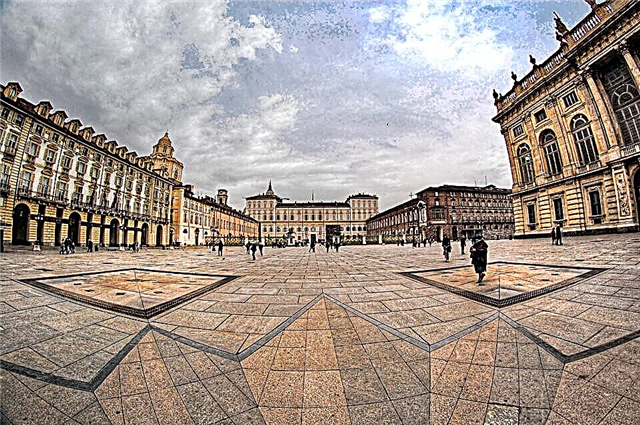
Local people gathered here for trade, fun, business meetings in the era of ancient Rome. In our time, the solemn ceremony of the 2006 Winter Olympic Games was held on the square. The birth, the decoration of the square with majestic buildings began at the end of the 16th century. The architectural ensemble of the square embodied the ideas of Ascanio Vitozzi. The ancient building of the 13th century castle harmoniously fit into the complex of the square, which gave it its second name, Zamkovaya Square.
Among the famous walls overlooking the square, the life of the best minds of those times passed, reviving in legends, traditions that have come down to our time. This is Nostradamus, Cagliostro, Count Saint Germain. Walking around the square, one cannot but admire the Madama Palace, the Armory, the library, the Government Palace. Royal court church, an original sculptural composition, the building of the largest opera house in Italy. The four main streets of the city start from this square. They beckoning beams, countless arcades call to get to know the city better, to unravel its magical effect on people.
To get to the central square just take tram number 5, buses 13, 55, 56. You need to get off at the Carlo Alberto stop. Take the metro to Porta Nuova station.
Piazza San Carlo
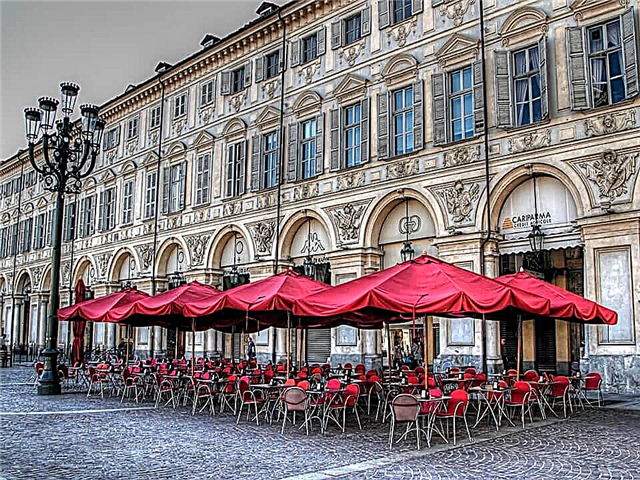
The main attraction of the city was otherwise called the Royal Square or the Square of the Army and Napoleon. Now all the important mass events of the city are held here. The ensemble of the most beautiful square of the city was created by the famous architect Carlo di Castellamonte in the middle of the 17th century. The square is surrounded by majestic palaces, beautiful buildings of baroque churches, erected in honor of the saints Karl, Christina.
An interesting bronze statue of the Duke of Savoy, Filibert, rises in the center of the square. The author of the sculpture is the great Carlo Morocchetti. The square is considered the salon of the city. There are numerous cozy cafes that complement the elegant, elite atmosphere of the square. The old cafes offer Piedmontese cuisine and famous Italian desserts. The square is located not far from the station. You can walk to the square along the covered gallery of the central pedestrian street of the city of Via Roma, starting at Piazza Castello.
Mole Antonelliana
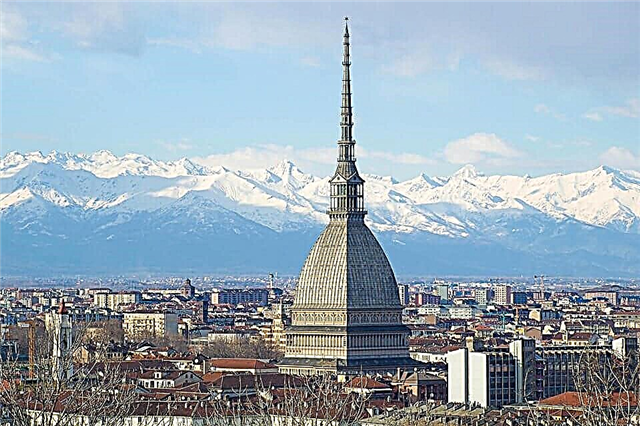
Until 2011, this tower was the tallest building in Italy. The symbol of Turin, similar to the famous Eiffel Tower in Paris, coincidentally appeared in the city in the same year with it. The author of the masterpiece of building technologies was the Italian architect Antonelli. A project was conceived as the main synagogue of the country (Turin was its capital). The construction of the building (167.5 m high) was completed in 1889 to house the Risorgimento Museum (Museum of the Unification of Italy). It was the tallest museum in the world. After 30 years, he was transferred to another building.
The famous film collection, assembled by Maria Adriana Prolo, gave birth to the Museum of Cinema, which is now functioning and is considered the best among such museums in the world. The high-speed glass elevator will quickly bring those who wish to the unique observation deck, located high in the sky. The spire of the tower rises above the city and is visible from any place.
The address of the tower location is Via Montebello, 20. The tower is open to the public from Wednesday to Monday (9 am to 8 pm). The cost of a joint ticket to the museum and the observation deck is 14 €. For a reduced ticket, they pay from 8 to 11 €.
Palazzo Reale
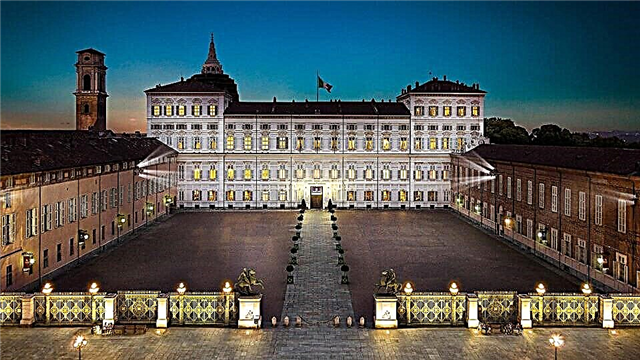
The Royal Palace (Palazzo Reale), towering in the central square, is considered the most visited attraction. This elegant building in the style of the Turin Baroque is the official residence of the members of the ancient Savoy family (who have held the title of kings of Sicily since 1973). In ancient times, this place was the Bishop's Palace, the Old Royal Palace, the Chapel of the Holy Shroud. The palace was built in 1658. Now it is included in the lists of UNESCO World Monuments.
An underground passage connects the Cathedral with the Palazzo Reale. You can visit it with excursions or on your own. The Throne Room, the Chinese Study, the Library, the Royal Kitchen, the King's Bedrooms, the Armory Hall are offered for viewing. The Red Hall with unusually rich decoration, the Blue Hall used for audiences. other rooms of the palace.
The attraction is located in the center on the Piazza Reale.
Palazzo Madama
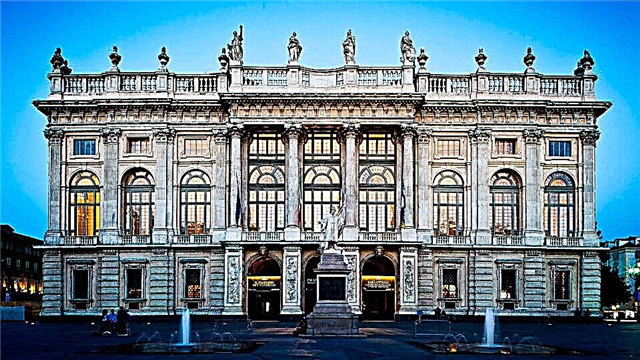
At the first glance at the building, towering in the center of the Castella square, it will seem that these are two buildings belonging to the architectural styles of different eras. Three facades of the building have been preserved from a medieval fortress, a gate, an ancient castle. Corner round towers form a gloomy, austere appearance of the building, which came from the surviving fortifications of the ancient Roman camp. The fourth side of the palace is made in a light, classic baroque style under the direction of Juvar. The palace got its name in the 17th century in honor of two queens from the dynasty of Savoy.
In contrast to the exterior, the interior of the Palazza is consistent with the solid, beautiful Baroque style. It contains ceremonial halls, a cozy courtyard, rich interiors of all rooms. The main attraction of the city was the Senate of the Kingdom of Italy, the Pinacoteca Reggia (gallery of artistic masterpieces of kings), Parliament, and the High Court. Now the building houses the famous Museum of Ancient Art.
Among its exhibits are drawings, figurines, porcelain, glass made during the late Middle Ages (for example, the malachite Medici vase, which exists in only three samples). There is a permanent exhibition with exhibits from Gandhara (an ancient kingdom located on the territory of Afghanistan).
Getting to Palazzo Madama is easy from the central square. To do this, use a trip by tram 15, buses 13, 55, 56 to the stop Carlo Alberto. The entrance to the palace is free of charge. Work starts at 10 o'clock and ends at 18.00. A free tour of the museum is organized every first Tuesday of the month.
Palazzo carignano
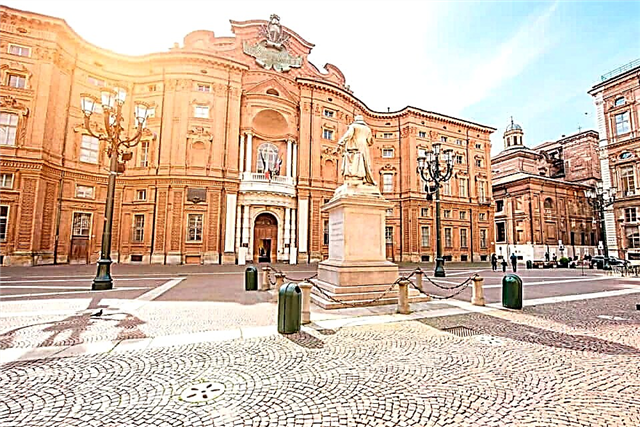
The building, which stands on Piazza Carignano, attracts the eye with its unusual architectural design. Elements of curved lines, ingeniously invented by Guarini, make the structure alive, mobile, increasing its volume. The curved grand staircase, the double dome that adorns the main hall of the palace, are considered innovative proposals in the architecture of 1679, when it was being built. Many important historical events in Italy are associated with the history of Palazzo Carignano.
The first king of the country, Emmanuel II, was born in the original palace. The sessions of the first parliament of young Italy were held here. On the facade of the building, rare architectural elements in the form of the faces of brave Indians are forever frozen. Drawings with their images were donated to the king's family after the war with the Indians of Canada in 1667. Respect for the enemy, his strength is reflected in the decoration of the palace.
Now in 27 halls of the palace there are expositions of the Risorgiomento Museum, telling in detail about the history of the unification of the country. The Palazzo is located at Via Accademia delle Scienze, 5.
Valentino castle
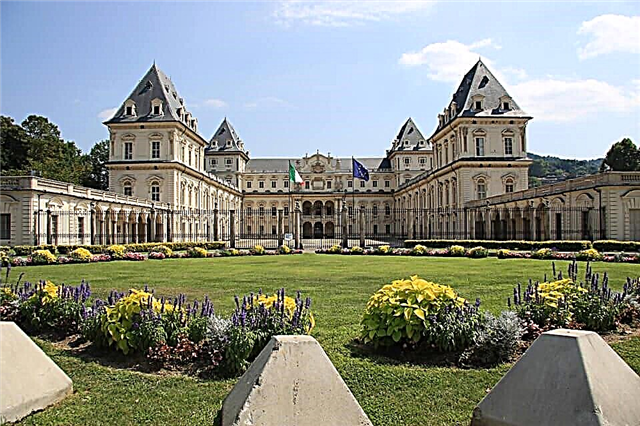
On the beautiful bank of the Po River, flowing in the central park of the city, there is an ancient castle, with a facade made in the Baroque style. The side of the castle, facing the river, strikes with red-brown shades of old brickwork against the background of the green vegetation of the park. At the first moment, the impression of two ceremonial buildings is created.
The castle was erected as a fortress - the residence of the House of Savoy in the 13th century. It got its name from the nearby St. Valentine's Church. The structure has an unusual horseshoe shape. Its courtyard is decorated with a mosaic of marble slabs. There are rich decorative elements inside the building. The castle is one of the monuments protected by UNESCO.
Now the castle houses the Faculty of Architecture of the Polytechnic University of the city. It hosts conferences and exhibitions of artists. The attraction is located at Corso Massimo d'Azeglio.
Regina's Villa
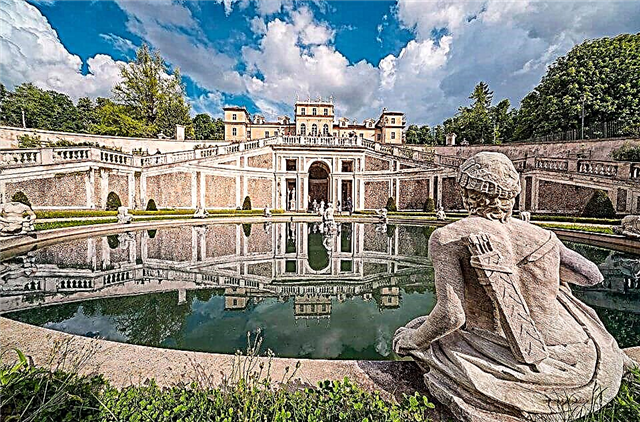
The residence of Queen Anne Maria was donated by the former owners, who built it in the 17th century, to the Duke Amadeus II (King of Sicily). A unique park, gardens with terraces, fountains, grottoes were laid out next to the rich villa. Throughout its complex history, the villa has gone through a period of desolation. After the building was handed over to the state in 1990, fundamental restoration work took place, which returned the park and the structure to its former luxurious image. Now the building houses a museum with an interesting collection of paintings. Among them are paintings, frescoes by Corrado Jacuinto Seiter Domenico, Filippo Minea.
The villa is located at Strada Comunale Santa Margherita, 79.
Basilica of Superga
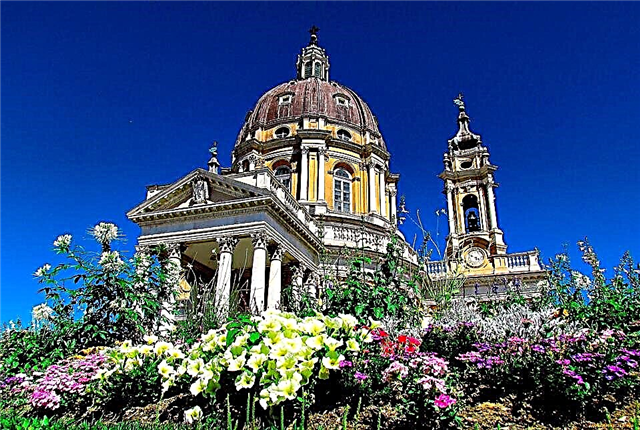
The beautiful legend is forever frozen under the majestic dome of an extraordinary church, standing at the top of the Superga hill. The construction of the Basilica is associated with the legendary oath of King Amadeus II to the Virgin Mary. He prayed for help in defeating the enemy and received it. The construction of the church began in 1717, and the construction was completed 15 years later. The late Baroque building with a majestic dome became the symbol of the city.
The basilica houses the tomb of almost all the kings of the Savoyard dynasty. Next to the altar, a chapel was built on the site where the ancient oath of the king in honor of the Virgin Mary was pronounced. This moment is depicted in the fresco that adorns the chapel. The central part of the building is occupied by a small museum, which includes an art gallery and an exhibition of sculptures. The sad story of the death of a football team due to an airplane crash (he caught his wing on the dome of the church) is reflected in the memorial erected in memory of the victims.
The Basilica of Superga is located at Strada Basilica di Superga, 73. You can climb the hill by funicular. Bus 15 will take you to the place of departure (from Piaza Castello to the Sassi stop) and then by buses 61, 68.
Cathedral of John the Baptist
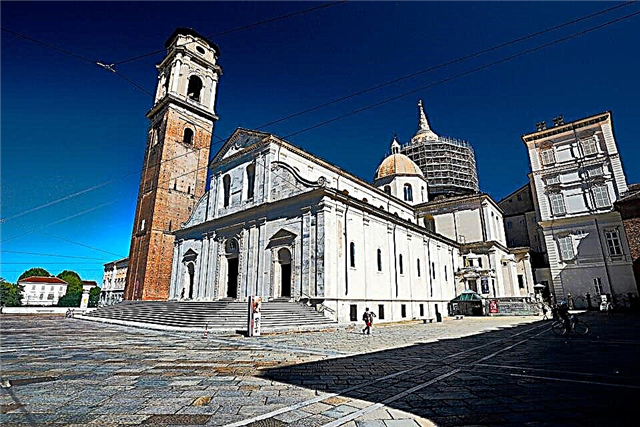
The main religious building is the only example of the Renaissance that has survived in the city to this day. The cathedral, erected in 1470, got its name in honor of the patron saint of the city, John the Baptist. The priceless shrine of the temple is the famous Shroud with the imprints of the face, the body of Christ. In the chapel of the cathedral, an exact copy of it is exhibited for general viewing. A real relic of the believers of the Christian world is rarely exhibited for viewing (once every 25 years). The next important church event will take place in 2025. It is kept in a secret room in a special fireproof case.
The temple was built under the leadership of the famous architect Francesco on the site of the ancient theater, the buildings of the first churches dedicated to Christ the Savior. The facade of the cathedral is made of white marble, decorated with elements with wooden carvings. They enter the cathedral along the mirror-like staircases in the side openings of the walls. The main hall sparkles with bronze stars on the dark marble floor. The light, voluminous dome creates a sense of the path to heaven, the ascension of Christ.
Now the cathedral is a place of pilgrimage for believers. Located in the city center next to Palazzo Madama, the Royal Palace.
Church of Santuario della Consolata
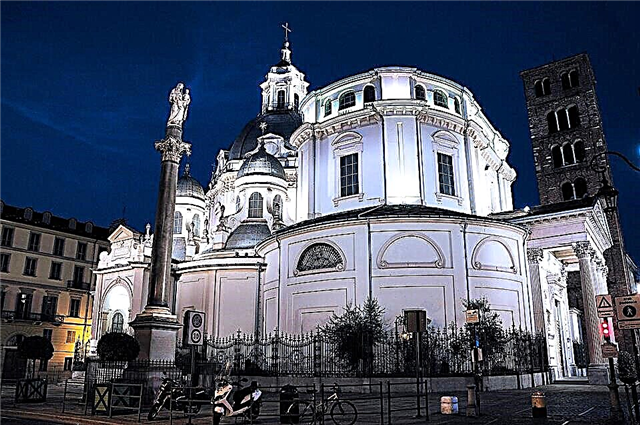
The modern building of the beautiful church is the creation of the famous Baroque master Guarino Guarini. Having appeared in the middle of the 17th century on the site of the old Church of St. Andrew (existed from the 4th century), the church was rebuilt many times. Inside the ancient building there was a chapel of the Virgin Mary with a miraculous icon in her honor. The whole life of the church is connected with the worship of this ancient relic. Now the icon is in the main church altar.
The modern look of the building was formed in 1860. On the outside of the building there is a statue of the Virgin Mary and Child. Its interior design amazes with its beauty, variety of elements of the Rococo style, "Solomon Pillars", marble sculptures. The church houses the burials of saints whose deeds are associated with the history of the city. These are Lonardo Murialdo, Giovanni Bosco, Giuseppe Cafasso. There is a convenient observation deck on the roof of the church, offering an extraordinary view of the city.
The Sanctuary of Our Lady of the Comforter (Church of Santuario della Consolata) is located on Calle della Consolata. Free admission. It is easy to get there by bus 52, 60 A or metro to stop XVIII Dicembre.
Church of the Gran Madre di Dio
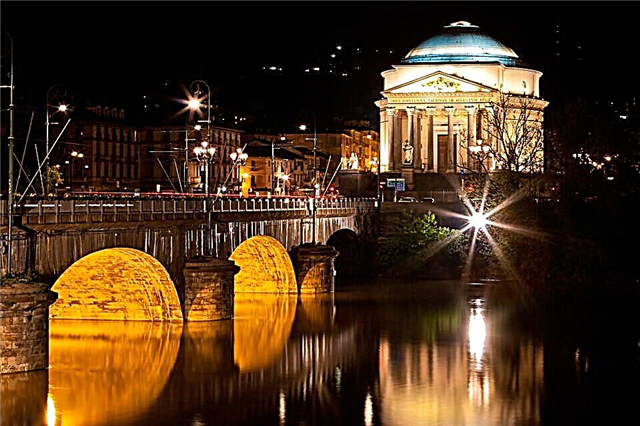
The majestic Temple or Church "Great Mother of God" is located at the foot of the Capuchin hill. Dedicated to the fall of Napoleon in 1834, the temple was built under the direction of the occult architect Bonsignore. It looks like the famous Pantheon of Rome. A building with a huge dome has grown on the site of the Temple of Isis. Just like in Rome, on the day of the winter solstice, rays of light fall on the mysterious gate of the church, illuminating two statues (Faith and Religion). The bowl in the left hand of the statue of Vera recalls the main secret of the church, which came to the modern world from distant legends, the Grail. She, along with the Shroud, was brought to Turin at the end of the 16th century.
Esotericists believe that the Catholic Church is dedicated to the Great Mother Goddess. They see in the myth of the Grail as a symbol of the body of the Great Mother, giving life. Many legends are known about the dungeons of the church, conducted by the black masses of the devils. One of them tells about the holy water of the Piave River, hiding in the dungeons. Namely, its water is used in the rituals of the black magic of Turin. Under the dome of the church, the black and white forces of magical Turin meet, creating the border of Light and Darkness.
You can visit the famous church in Italy from 7.30 to 12.00 and from 15.00 to 21 =. 00 o'clock in the evening.
Church of San Lorenzo
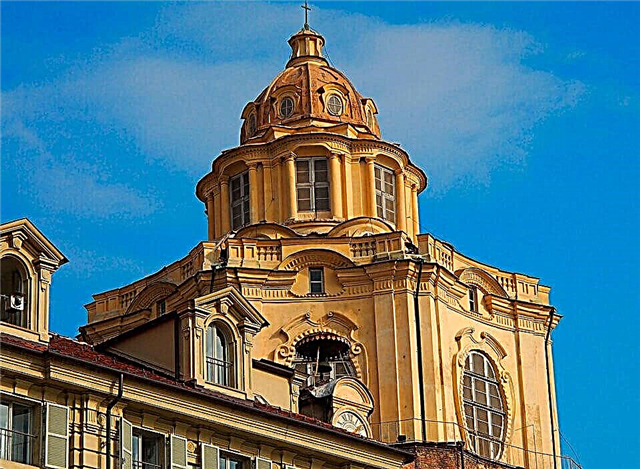
The current church is located next to the Royal Palace in Piazza Castello. An unremarkable building with its proportions harmoniously fits into the ensemble of the square. Outwardly, it resembles the fundamental building of a residential building, and not a majestic temple. The Church of St. Lawrence was built in the 17th century under the leadership of the architect Guarini.
His original thinking helped to create the extraordinary dome of the church. It looks as if weightless and soars in the air, shimmering in the rays of the sun and confirming the unusualness of the building. The interior of the church is striking in its originality and luxury. The building is considered the most beautiful basilica in the city.
The church is located at Via Palazzo di Citta, 4. You can get to the place by buses (1. 10. 55, 56) to the Castello stop. The church is open to visitors every day, and interesting guided tours take place here on Saturdays and Sundays. The entrance to the church is free of charge. Church events and services are held regularly.
Palatine gate
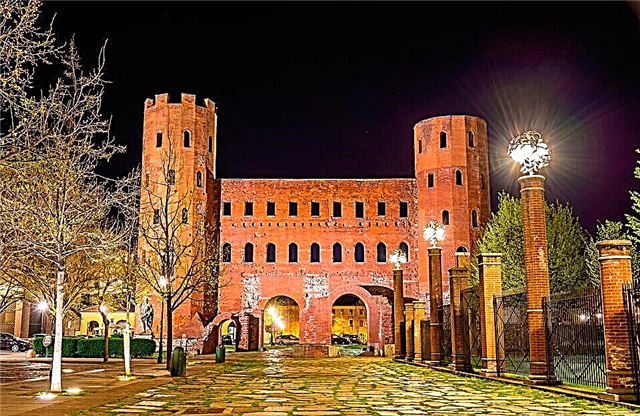
You can go to the Cathedral, Royal Square through the antique palace gates, an ancient structure, the preserved heritage of the city walls that existed in the 1st century BC. NS. In ancient times, through these gates, a passage was made to the place of the settlement of the Romans. The ancient capital of Italy, the city of Turin, was born here. Two corner towers, reaching a height of 30 m and having 16 side faces, were completed during the Middle Ages.
On the central part of the gate, two rows of windows (interturrio) have been preserved.Outside the gate, you can see the remains of a sentry box, bronze statues of the emperors Augustus and Caesar, which have existed since the period of the Roman Empire. The ancient gates add magic to the magical legends of the city. They are considered an esoteric place of the city due to the underground passages under the towers, which serve as a springboard for the Black Mass. Locals bypass the towers where Pontius Pilate lived.
Palatine Gate address: Piazza Cesare Augusto.
Teatro Reggio
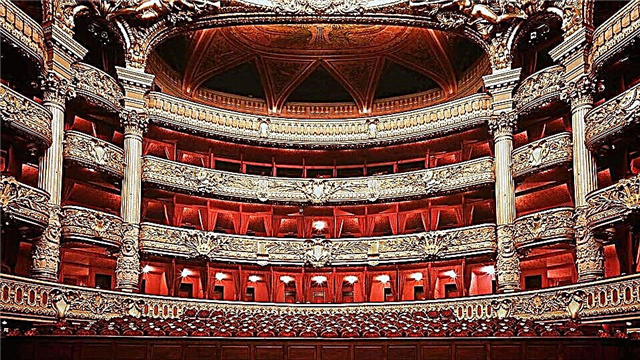
The building of the prestigious Italian opera house is located in Piazza Castello. It harmoniously complements the architectural style of the square, standing out with bright posters, an original red carpet inviting you to a musical holiday. It regularly hosts premieres of famous ballets and world operas. Each setting is repeated over 10 times. The first building of the opera house was built in 1740. A strong fire in 1936 left ruins on the site of the building. It was only in 1973 that the lights came on in the new opera house.
The elliptical hall of the theater has a capacity of about 1800 people. Acoustics, convenient infrastructure of the building create a solemn, festive mood even when approaching the majestic building. The theater is very popular with local residents and tourists. Performing on his stage is every performer's dream.
Egyptian Museum
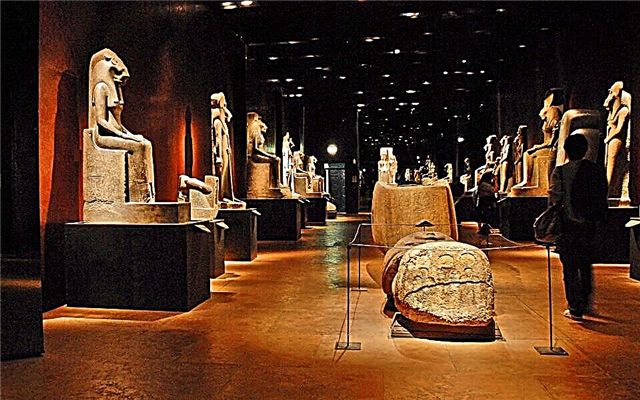
The history of the creation of the famous museum began in the 18th century, when the King of Sardinia Karl Emmanuel III became interested in collecting exhibits related to the history of ancient Egypt. In 1824 he acquired the collection of the Consul of France in Egypt, Bernardino Drovetti. Gradually, the Museum became the second largest (after the museum in Cairo) the owner of a rich, valuable collection. Back in 2012, the Museum was housed together with the Sabauda Art Gallery (before its move to the premises of the Royal Palace). The museum received additional premises, on the territory of which there are about 30 thousand exhibits related to the greatest civilization of the planet.
Among them are items found in the burial place of the famous Nefertiti, rare papyri, for example, the "Royal Papyrus", which tells about the rulers of Egypt, their important achievements. Or the famous Turin erotic papyrus, which has become an element of the museum's permanent exhibition. The oldest geographical map of the world is kept here. The sculptural hall houses numerous statues of pharaohs, mythical animals.
The third floor of the museum is filled with mummies, the tools used to make them, scrolls from the magical Book of the Dead. Here, along with the items to be buried with the deceased, bread is kept baked over three centuries ago.
The halls of three floors of the building located at Via Academia delle Scienze, 6. The museum is open daily from 8.30 to 19.30 hours.
National Automobile Museum
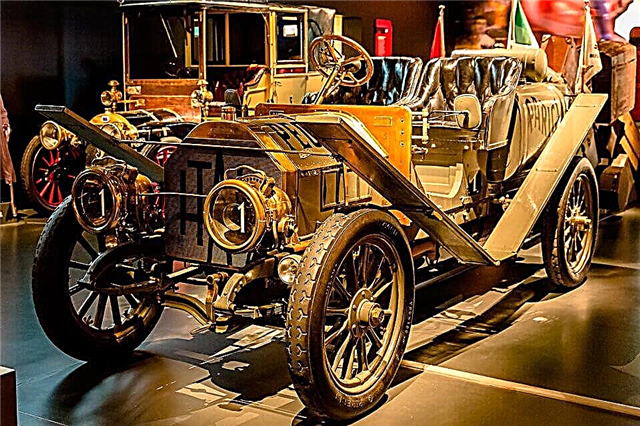
Under one roof of an interesting museum, opened in February 1957, various models of cars produced in different countries of the world are collected. The exposition of the museum includes about 200 unique car models, reflecting the achievements of 80 brands. Among them are the first 4-wheeled Benz model (1893), the first Italian car (Bernardi three-wheeled model in 1896), the first car made in Turin (Fiat 4HP 1899).
The museum is located in a former production building of an automobile concern and with its expositions illustrates the stages of development of the global automotive industry. Several thematic galleries have been created in it. For example, one of them is dedicated to auto racing cars. Formula Ferrari race cars, Alfa Romeo ring cars, Lancia rally cars and over 20 more models that conquer difficult tracks in the XX century. Among the exhibits of the museum are such cars as the model "124", which became the prototype of the famous "kopeck" (the first mass-produced car VAZ) or a car with the logo "Lada" that appeared in Togliatti in 1976.
The museum is located at Corso Unita d'Italia 40. You need to take the metro to the Lingotto stop or shuttle buses 1, 17, 18, 34, 35.
Museum of Oriental Art
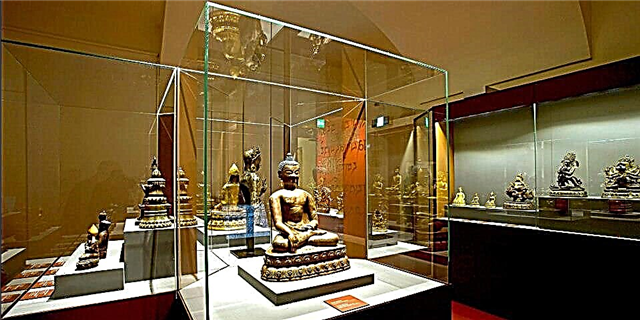
The residence of the 17th century houses exhibits, exhibitions of an interesting museum, telling about the development of the religion of Buddhism, the traditions of art of the ancient countries of the East. The first floor contains a collection of Chinese art. Porcelain objects, bronze ceremonial instruments, ancient lacquers of the Chinese dynasties.
Masterpieces of the cultures of Tibet, Buddhists are located on the second floor. The halls of the third floor are provided for works of art from the countries of Islam (Turkey, Iran, Iraq). Interesting works from Japan are also found here. These are statues, paintings, unusual varnishes. The museum was opened in 2008. The most valuable collection of the museum is considered to be the art of Gandhara (the historical region of the ancient kingdom from Afghanistan to Pakistan).
Buddha statues, Indian ancient deities, samurai equipment, books by Tibetan monks, ceramics, bronze, wood made by ancient craftsmen are always interesting for museum visitors. In total, over 1500 interesting works are kept in its storerooms. It is located in the Mazzonis Palace at Via San Domenico. Opens from 10 am to 6 pm.
Juventus stadium
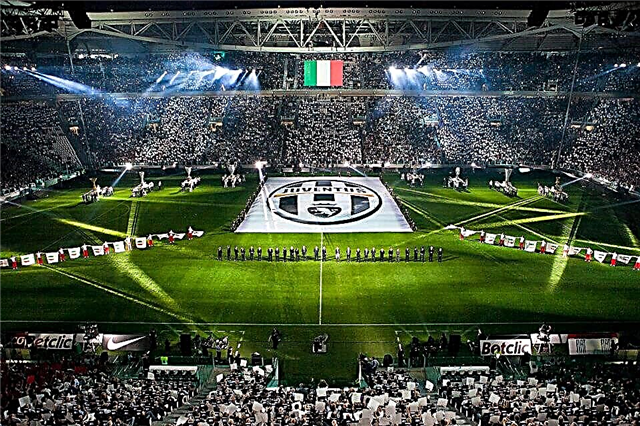
The modern sports complex opened in September 2011. At the same time, 41,000 people can watch the exciting spectacles taking place at the grandiose stadium. At the same time, they are guaranteed safety, convenience, comfort in any place. access to the stands is through four secure entrances located at the corners of the arena. Each sector is designed in such a way that it has 16 different ways to approach the desired seat.
In case of emergency, all spectators leave the stadium within 4 minutes. The hallmark of the structure is steel supports made in the shape of the letter "L". They are painted in the colors of the National Flag of Italy. The Juventus stadium has good infrastructure. These are parking, cafes, green areas, 8 restaurants, shopping areas. There is a walk of fame on the territory, where there are portraits of 50 of the main players of the team throughout its history. Since 2012, the headquarters of the Juventus team and football schools have been located here.
The stadium is located at Strada Comunale di Altessano 131. It is easy to get to the Bernini stop by metro. Further by special transport going to the stadium. Or by buses 62, 72, 75.
Pelerina Park
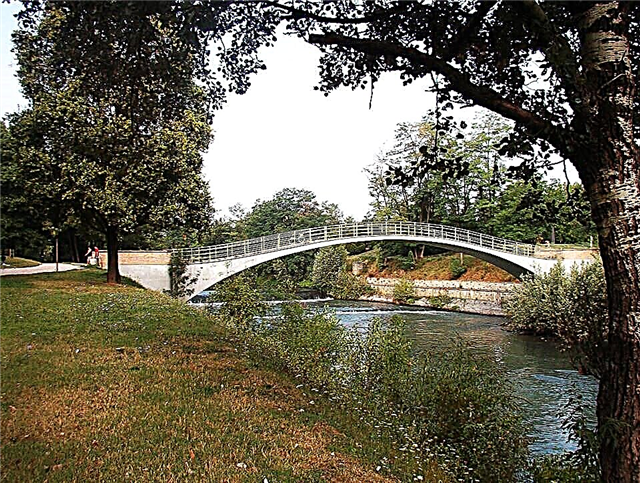
The largest park in the city is located in the western part. Its area is about 85 hectares. The park is named after the famous anthropologist of the city university. Locals call it the Pelerina Park, which is associated with the cheese dairy of the same name, located nearby. The park was created in the middle of the last century. It has a large number of sports areas (tennis, swimming pool, roller-skating tracks, football fields).
Festive events and concerts are often held in the park. It has become a favorite vacation spot for city residents. The beautiful Dora Riparia river helps to create a pleasant atmosphere of the park. Located at Parco della Pellerina.
Monument to Vittorio Emanuele II
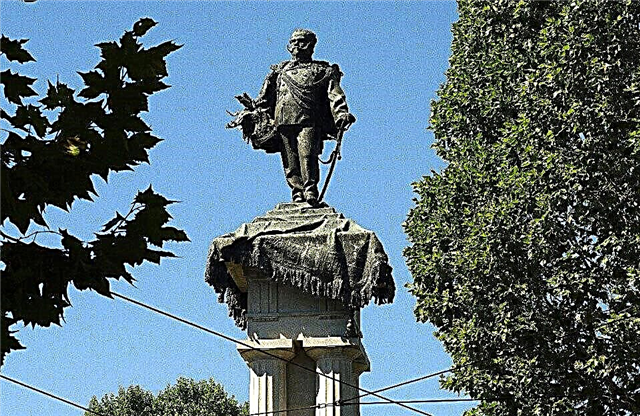
Turin is the birthplace of King Vittorio Emanuele II, the main historical figure of Italy. Through his efforts, many regions were united into a state. There is an impressive monument in the city center, as the personality of the monarch is deeply revered by Italians. The height of the monument is 39 meters, which symbolizes the greatness of the outstanding ruler. The bronze monument depicts the king in full growth, standing majestically in four granite columns, facing different directions of the world.
At the base of the columns are figures resembling ancient goddesses. They symbolize unity, work, freedom and brotherhood, which underlie the moral and ethical ideas of the inhabitants of Italy. The monument is located on one of the largest streets of the city and, going towards Salferino Square, you find yourself in its historical center, a concentration of luxurious palaces, various museums, squares and many statues.
Rivoli Castle
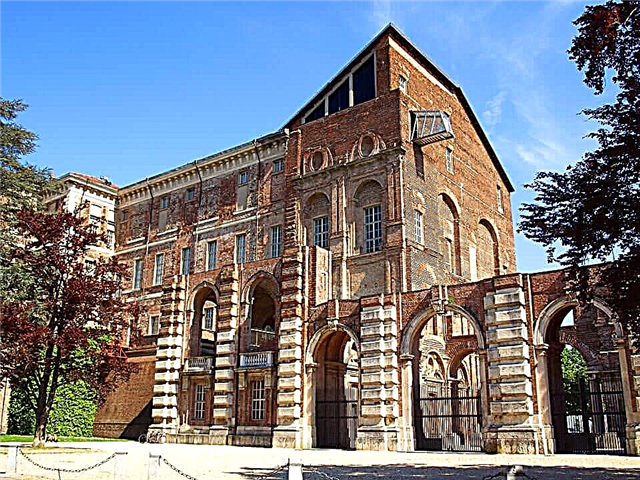
On the outskirts of the city there is a small Rivoli (not to be confused with Verona's Rivoli).Its main attraction is the castle built in the 9th century. The architectural masterpiece has survived many historical events, decline and great times, was plundered, restored more than once, and abandoned. But today it is a well-known European Museum of Contemporary Art. For 500 years, the castle was the seat of the Savoy dynasty, then a repository of valuable exhibits of fine art, but the French army plundered it.
For 150 years in oblivion, the castle comes to life again: this time it is used as a barracks, which runs counter to its scale, magnificent architecture and great history. After the Second World War, a thorough reconstruction was required and the castle again becomes a museum, but this time of modern art. Tourists are impressed by the rich history of the ancient castle, its impressive size, architectural details, museum exhibits and the atmosphere of antiquity.
Automobile Museum
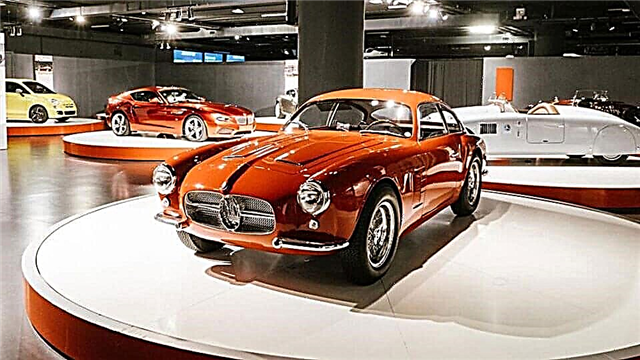
Car enthusiasts should definitely visit this place. In 1932, Roberto Biscaretti di Ruffia, one of the founders of the Fiat brand, and his son Carlo began showing their private collection of cars. After 7 years, it already numbered 100 exhibits, and was moved to a room under the stadium. In 1960, there were so many exhibits that they demanded decent placement in the spacious museum halls. For these purposes, a new three-storey building was built, thematically divided into sectors.
The first one, Origins, (on the third floor) tells about the creation of a new vehicle. This is the parking lot of the very first vintage cars of the late 19th - early 20th centuries, the power of which was 20-30 horsepower. There is also a library where you can learn about the origin of the most popular means of transportation. On the second floor there is a section "Cars and People", where a collection with the self-explanatory name "Formula" is parked - the place of race cars - high-speed cars, participants of "Formula-1".
The section "Automobile and Design" on the ground floor displays a large number of exhibits from different countries and even the Soviet "Victory". Various installations entertain visitors: a hippie car painted in bright colors, a romantic mini-bus from the 60s forever parked in the museum, next to it all the camping accessories.
National Film Museum
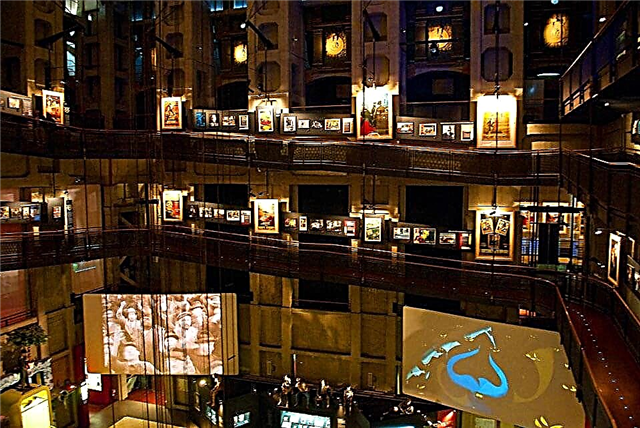
In many museums, in a huge hall, you can sit on comfortable sun loungers and relax? Or take a glass elevator floating on cables (the Mole elevator has no shaft) to a height of 85 meters? And in the National Museum of Italy you can. It is located in the 167 m high Mole Antonelliana tower. Climbing to the top floor, you find yourself on the observation deck, where you can admire the view of the Alps and take in the panorama of the city.
The museum displays a huge number of exhibits related to the history of cinema. Back in 1941, the historian Maria Adriana Prolo began to carefully collect them. In 2000 this collection was moved to Mol. One of the twenty most visited museums in Italy has 300 thousand posters, including hand-drawn copies of the early 20th century, 20 thousand thematic books and more than 7 thousand films, portraits, scenery, costumes, magazines and books, the oldest films, camera obscura, kaleidoscopes ...
In a word, there are many rare attributes of the Italian cinema of the last century, which can not only be examined, but also touched. Light and sound effects, an impressive video sequence, a collection of sound recordings from different times - all this creates the feeling that at the moment you are part of a movie. The National Film Museum is definitely worth a visit; it completely changes the prevailing idea of what an interesting modern museum should be.
Sabauda Gallery
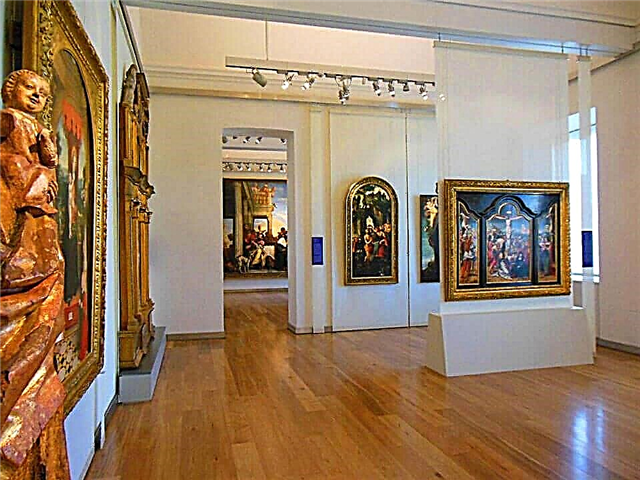
It is impossible to get a complete picture of the cultural side without visiting the Sabaud Gallery. It contains 700 masterpieces of fine art from all over the world. Paintings, altars, statues created by talented creators from the 13th to the 19th century. The collection has been meticulously replenished with grandiose creations for almost 180 years. The collector Carl Alberto in 1830 "fired up" the idea of creating such a cultural center and became the pioneer of one of the most significant galleries in Italy.
The monarchs of the Savoy dynasty supported the initiative of Signor Alberto, and already in 1861 provided the corresponding building for the public gallery. Since 2014, the museum has been located in the Pallazo Reale, the former building of the Academy of Sciences, with exhibits on four floors. They are thematically divided into sectors in chronological order. Each floor is a certain period in the history of art.
Old canvases by artists, works created during the Italian Renaissance, find a place here for temporary traveling exhibitions. The interior decoration of the gallery, made in accordance with the ancient architectural tradition, deserves special attention. The ceilings and cornices are adorned with intricate stucco patterns, while bas-reliefs and semi-columns add luxury and grace to the museum halls.
Turin is in the TOP 10 most visited cities in Italy, and this is not surprising. Each of its streets is a historical relic.

